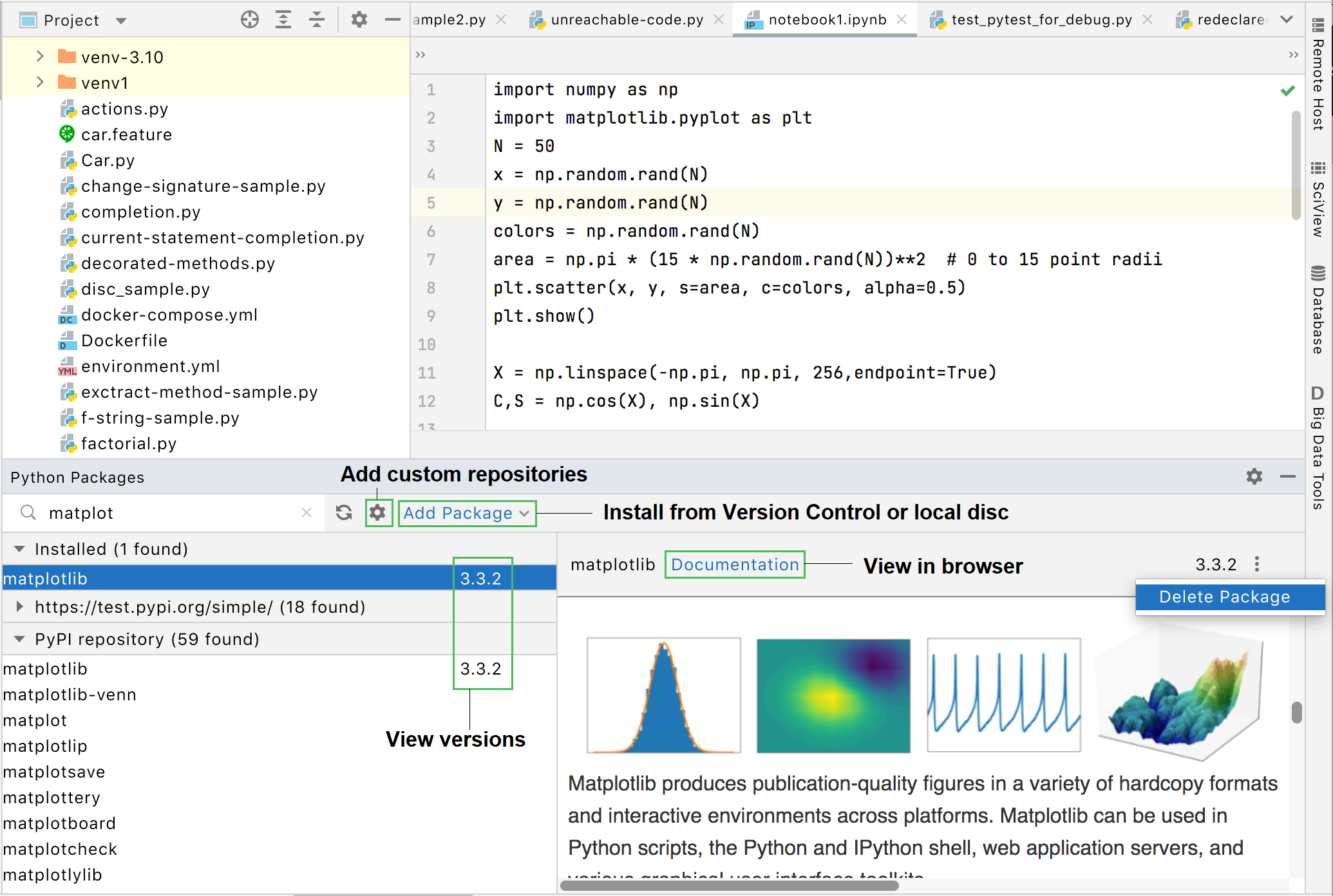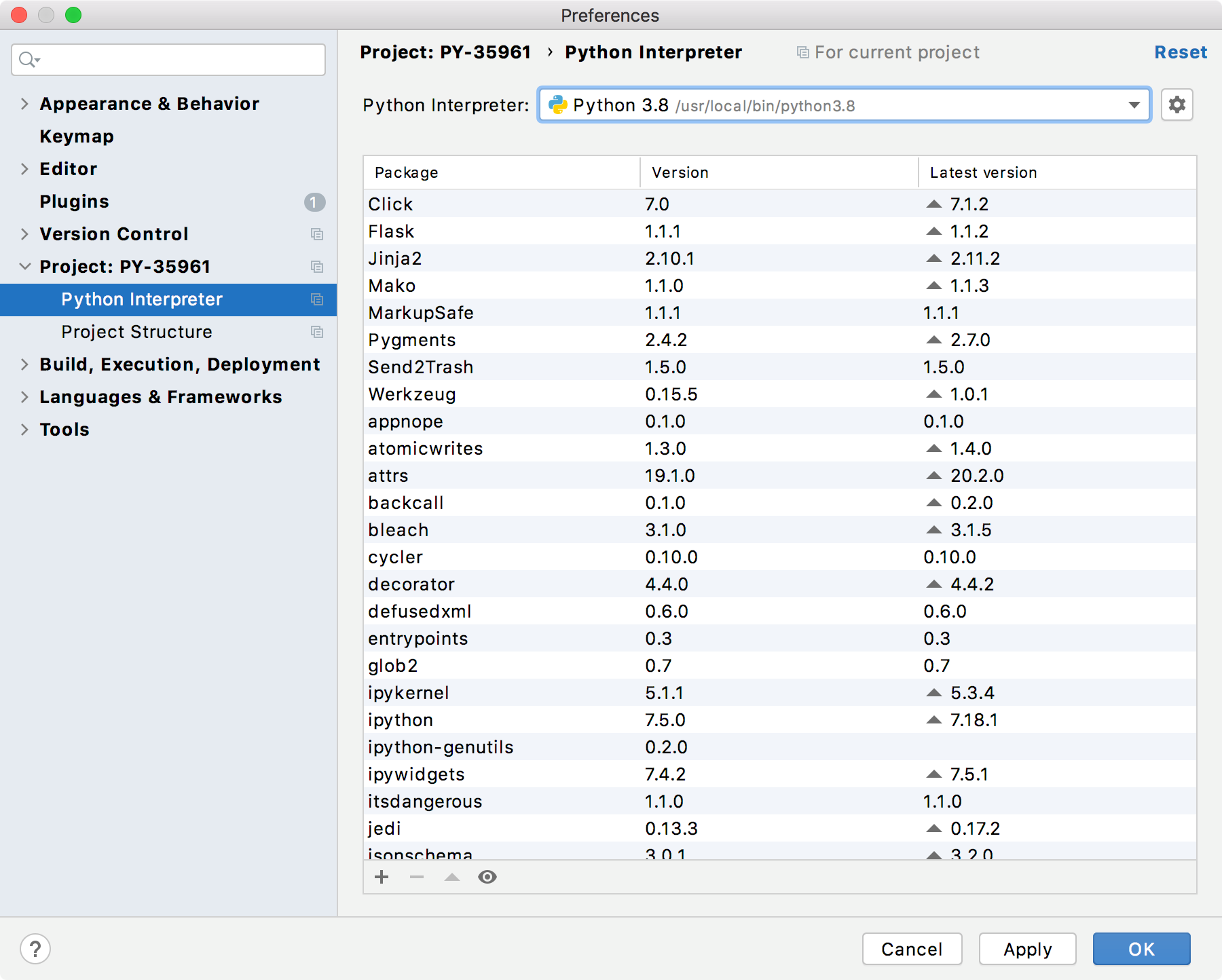How to Install a Python Package From Github
Install, uninstall, and upgrade packages
PyCharm provides methods for installing, uninstalling, and upgrading Python packages for a particular Python interpreter. By default, PyCharm uses pip to manage project packages. For Conda environments you can use the conda package manager.
In PyCharm, you can preview and manage packages in the Python Packages tool window and in the Python interpreter Settings/Preferences.
The Python Packages tool window provides the quickest and neat way to preview and install packages for the currently selected Python interpreter. This window is enabled by default, and you can find it in the lower group of the tool windows. At any time you can open it using the main menu: .
The Python Packages tool window shows installed packages and the packages available in the PyPI repository. Use the Search field to filter out the list of the available packages.

You can preview package documentation in the documentation area, or you can click the Documentation link and open the corresponding resource in a browser.
To delete an installed package, click in the upper-right corner of the Python Package tool window.
Install packages from repositories
-
Start typing the package name in the Search field of the Python Package tool window. You should be able to see the number of the matching packages.

-
Expand the list of the available versions in the upper-right corner of the tool window. Select the required version or keep it the latest.
-
Click the Install button next to the version list. Once PyCharm notifies you about successful installation, you should see the package in the list of the installed packages.

-
If needed, click
and provide a path to any custom repository you want to install from.
Install packages from Version Control System
-
Click the Add Package link on the Python Packages toolbar and select From Version Control.
-
Specify a path to the target git repository. Refer to pip documentation for more information about supported path formats.

-
Select Install as editable (-e) if you want to install a project in editable mode (for example, setuptools develop mode).
Install packages from a local machine
-
Click the Add Package link on the Python Packages toolbar and select From Disk.

-
Specify a path to the package directory or an archive (zip or whl).
Manage packages in the Python interpreter settings
To manage Python packages for the Python interpreter, select the Python Interpreter page in the project Settings/Preferences or select Interpreter Settings in the Python Interpreter selector on the Status bar.

If you select a Python interpreter with the configured Conda environment, the Use Conda Package Manager toggle appears in the packages area toolbar.

Use this toggle to manage packages from the Conda environment repository. This toggle is enabled by default for Conda environments.
Install a package
-
Click the
button on the package toolbar.
-
In the Available Packages dialog that opens, preview the list of the available packages.

To specify a custom repository, including devpi or PyPi, click Manage Repositories.
In the Manage Repositories dialog that opens, click
to add a URL of a local repository, for example, http://localhost:3141/root/pypi/+simple/, then click OK. In the Available Packages dialog, click
to reload the list of the packages.
-
Type the name of the package to install in the Search field. The list shrinks to show the matching packages only.

-
If required, select the following checkboxes:
-
Specify version: if this checkbox is selected, you can select the desired version from the list of available versions. By default, the latest version is taken.
-
Options: If this checkbox is selected, you can type the
pip installcommand-line options in the text field. -
Install to user's site packages directory <path>: If this checkbox is left cleared (by default), then the packages will be installed into the current interpreter package directory. If the checkbox is selected, the packages will be installed into the specified directory. This option is not available for Conda environments.
-
-
Select the target package and click Install Package.
Uninstall a package
-
In the list of the packages, select the packages to be removed.
-
Click Uninstall (
 ). The selected packages are removed from disk.
). The selected packages are removed from disk.
PyCharm smartly tracks the status of packages and recognizes outdated versions by showing the number of the currently installed package version (column Version), and the latest available version (column Latest version). When a newer version of a package is detected, PyCharm marks it with the arrow sign and suggests to upgrade it.
By default, the Latest version column shows only stable versions of the packages. If you want to extend the scope of the latest available versions to any pre-release versions (such as beta or release candidate), click Show early releases.

Upgrade a package
-
In the list of the packages, select the package to be upgraded.
-
Click Upgrade (
 ).
). 
The selected packages are upgraded to the latest available versions.
-
Click OK to complete upgrading.
If you're accustomed to installing packages from the commands line, you can proceed with your workflow using the Terminal.
Reuse installed packages
-
Create a new virtual environment and install packages that you want to be used in other projects. Then you can specify this virtual environment as a Python interpreter for the target project and all the needed packages will be available.
-
In the Terminal window execute the following command:
pip freeze > requirements.txtThen add the created
requirements.txtfile to the target project and PyCharm will prompt you to install the packages listed in the file.
Last modified: 22 September 2021
How to Install a Python Package From Github
Source: https://www.jetbrains.com/help/pycharm/installing-uninstalling-and-upgrading-packages.html